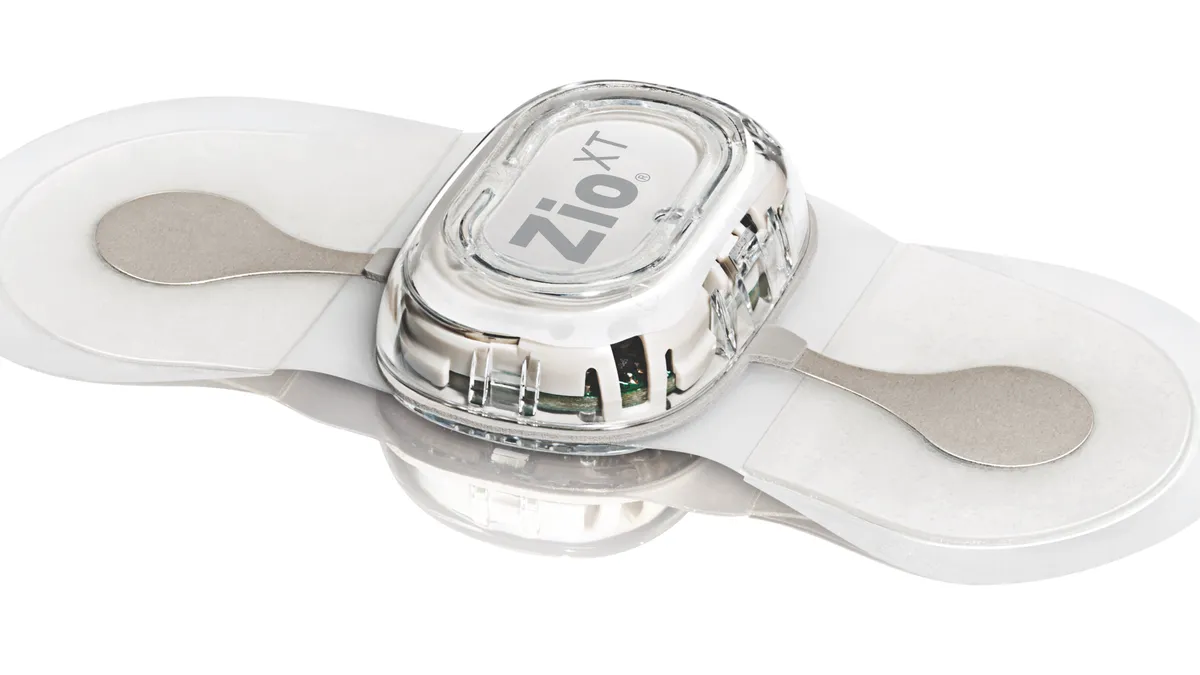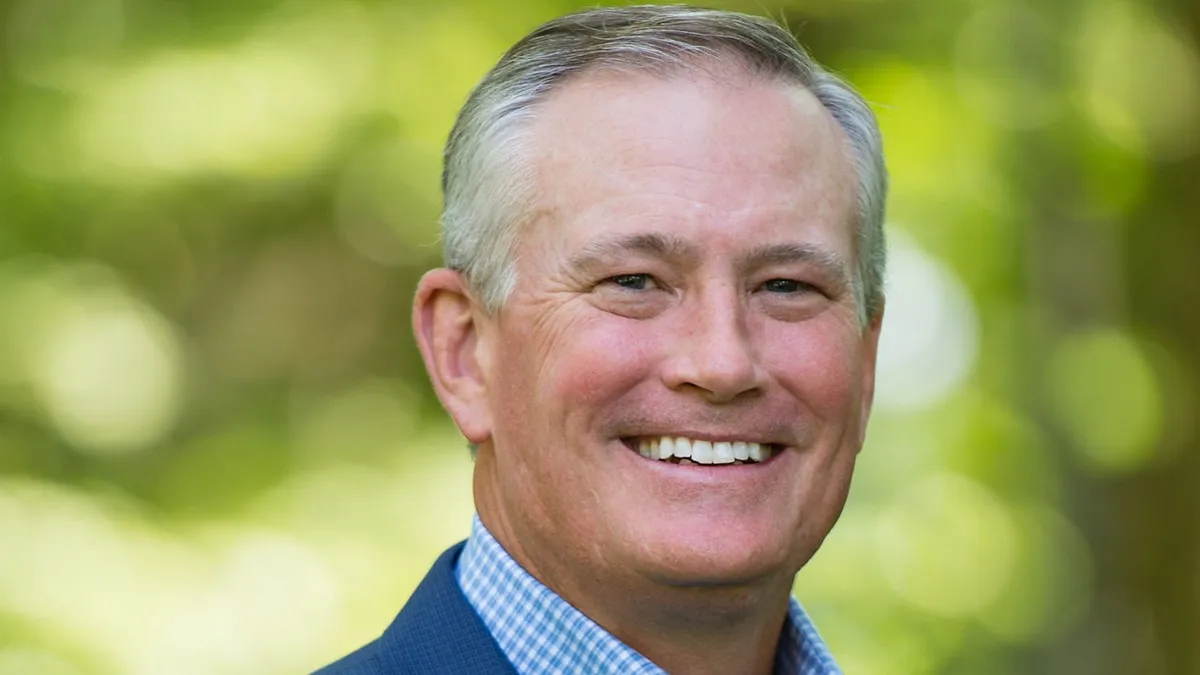While taking over a company during a pandemic is definitely not an ideal circumstance, iRhythm Technologies CEO Michael Coyle said that he would never have passed on the opportunity.
"I wouldn't recommend it as something that everybody should do," Coyle said. "But I'm very glad I did it."
The new CEO took over mid-January after being announced as former CEO Kevin King's successor late last year. Coyle was with Medtronic for over 10 years, most recently as executive vice president and group president of the company's cardiac portfolio.
Digital health services like remote patient monitoring have found success amid the coronavirus pandemic as virtual care usage has taken off, and cardiac monitoring companies like iRhythm have benefited. The company's stock price has increased from $87.96 to $244.62 over the last 12 months.
The cardiac space has also seen a flurry of M&A activity in the first weeks of the year, with companies like Boston Scientific snatching up the cardiac wearables company Preventice Solutions for $925 million.
Wall Street analysts painted iRhythm as the clear leader in the cardiac monitoring market and wrote that the recent run of deals does not threaten their position. The M&A increase only reaffirms J.P. Morgan's view that the space has an opportunity to grow in the coming years.
While Coyle seeks to build on iRhythm's recent success and expand into new markets, he will also have to navigate through a recent setback when CMS did not finalize national pricing for extended external EKG patches as was expected, which caused the company's stock price to briefly tumble.
This interview has been edited for clarity and brevity.
MEDTECH DIVE: Digital health and virtual care companies have been relatively successful over the last 12 months or so, and iRhythm has been one of them. What do you see as the growth opportunities for this company?
MICHAEL COYLE: I think the growth profile is really just beginning. This solution, the Zio solution, is less than 20% penetrated in the U.S. market for symptomatic arrhythmias. And the rest of the market continues to be the traditional older technologies like event recorders and certain older, less functional mobile cardiac telemetry systems. I see the growth potential in the United States to continue to be very significant. I talked about a $1.8 billion market potential. So, the company's got a lot of room to grow just in the U.S.
Another big opportunity is indication expansion. Today, the market is almost entirely patients who have symptoms of arrhythmia, either palpitations or they have syncope, unexplained fainting. But evidence that we've been generating with partners over multiple years, have begun to really open up the opportunity for asymptomatic patients or silent [atrial fibrillation] patients.
CMS did not finalize national pricing for extended external EKG patches in December. How will that impact iRhythm?
COYLE: Two things happened at the beginning of December: One was that a Category I permanent code was agreed to for the extended monitoring. That's a big win for the technology. Now, we have a permanent code, which is very helpful because it allows us to go to provider systems and give them confidence that if they build this into their workflow and into their [electronic health record] systems, the device isn't going to lose coverage.
What Medicare chose not to do was to apply a single national price for the technology and referred that down to the [Medicare Administrative Contractors (MACs),] the regional Medicare administrators. The MACs will then separately negotiate the actual price for that Category I code in their area. This is no different in terms of how we've established pricing than what has been true for the last eight years, and we've had multiple years of stable pricing. We'll be using this process to establish 2021 rates, and obviously, that process could go on for years.
Has there been any price-cutting or rate changes from the MACs?
COYLE: It's a dynamic process in terms of how the determination is made at the MAC level for what pricing they will propose. One thing I would say is, compared to where we were when we got the original pricing we've been operating under, many enhancements have been made to the system to increase its value to patients. So, I will obviously lay that case out and we'll see where we land. They'll be the ultimate determiners of what the proposed pricing should be.
Former CEO Kevin King said it could be two years before national pricing is given for these devices. Is that a timeline you agree with?
COYLE: I wouldn't rule it out. But, on the other hand, we're way too early in the process to put a timeline on it.
One issue that has been brought up is whether payers understand how to pay for digital health in a predominately fee-for-service system. How can you gain traction there and work with agencies like CMS to change coverage of digital health services?
COYLE: Data speaks volumes. And that's why the company over many years has invested in clinical studies and cost-effectiveness studies, to be able to look at what does it actually cost to do this kind of monitoring. The studies also look at what kind of outcomes benefit do patients get in terms of hospital charges and billing that comes from the insurance companies when they are treated one way or another way. That's a lot of work. That's hard work in terms of generating and analyzing those data. But it's really the only way to really know if what you're doing is actually costing the healthcare system money or saving the healthcare system money,
I think one of the challenges CMS has is statutorily they've been required to think about how to establish the reimbursement in a very rigid way. One nice thing about the MACs is that they have much more flexibility to revisit the methodologies that are being used and decide what makes the most sense to them.
Finally, what experiences from Medtronic will you be able to bring to iRhythm?
COYLE: At Medtronic, over half the revenue that I was working with was generated outside the United States. The fact that iRhythm is pretty much entirely a U.S. company, is a real opportunity for me to use my experience and my contacts in those regions to help build the business.
The other thing that we did a lot at Medtronic was market development. We figured out how do you generate clinical evidence, how do you generate economic evidence, how do you generate reimbursement and get regulatory approvals around the world. I have a lot of experience on the market development side, which is key here because this is a disruptive technology and we’re looking to displace older, obsolete technologies. And the answer to getting adopted quickly is to show better clinical outcomes and more cost-effective outcomes.

















